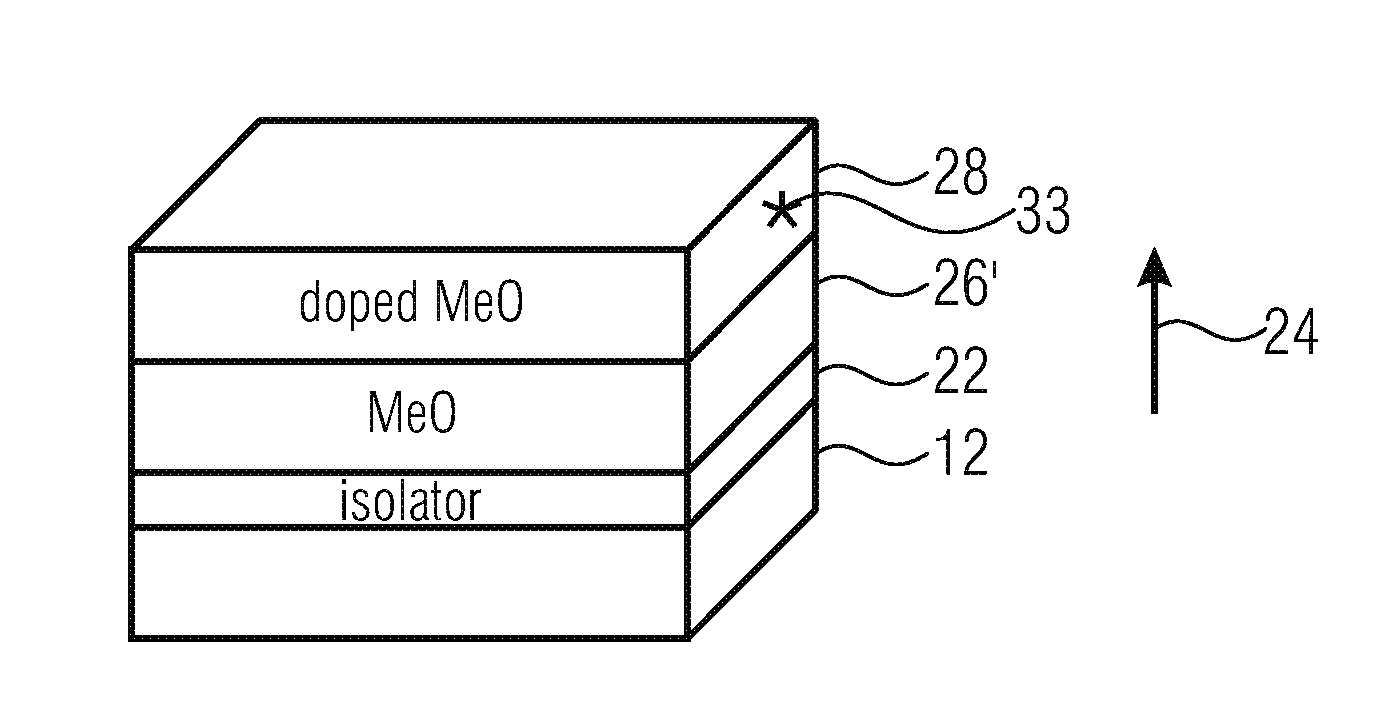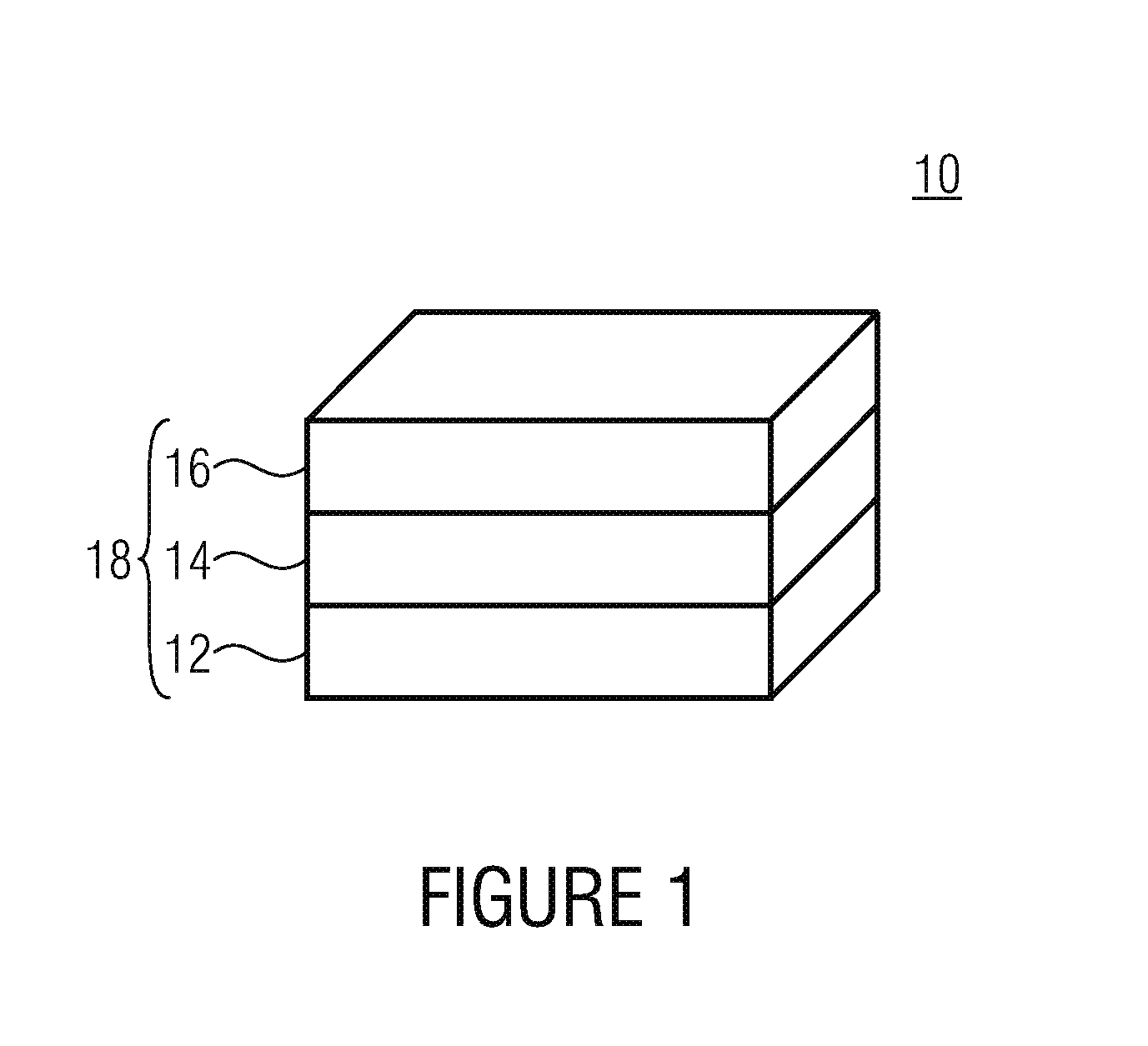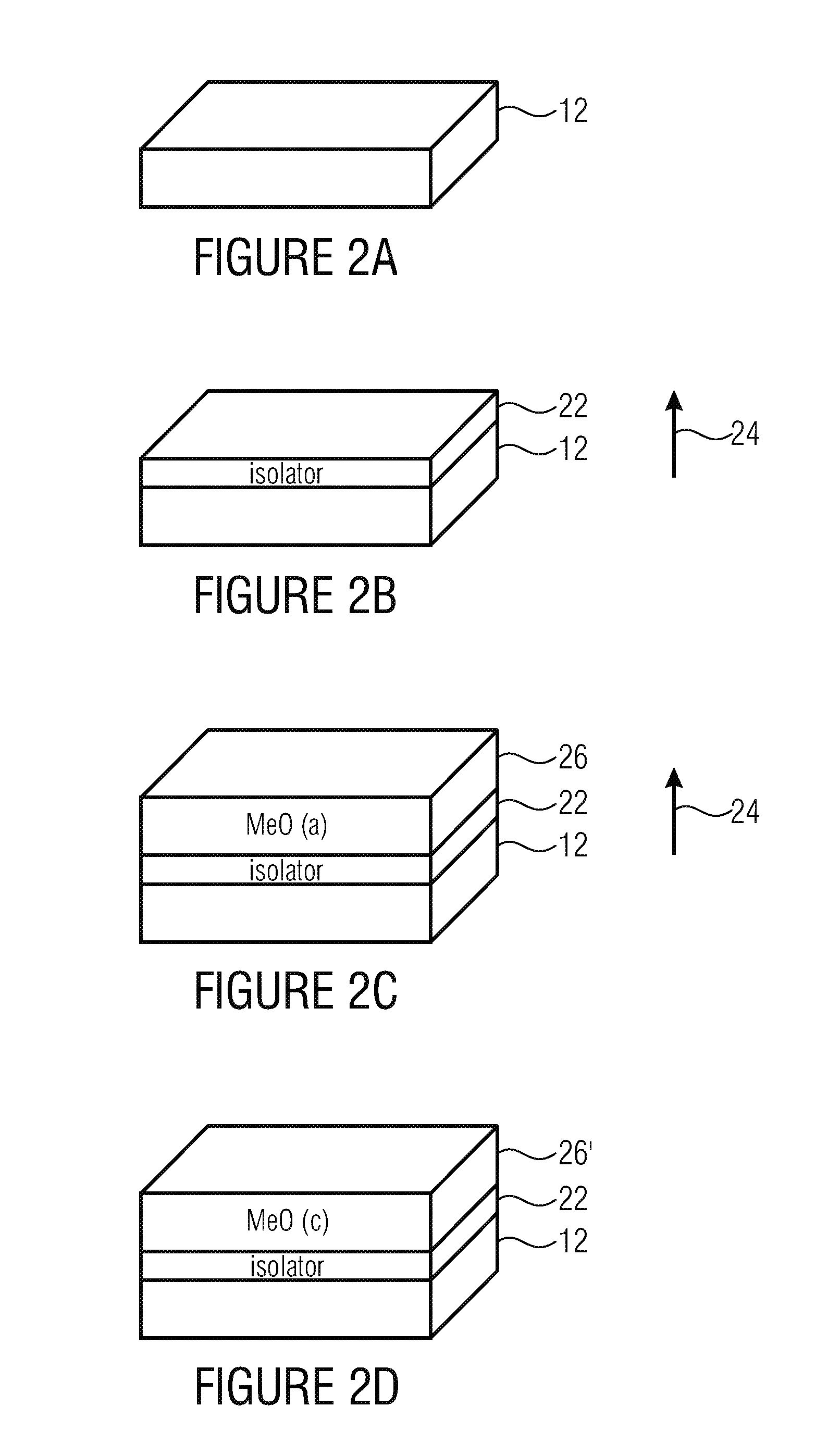Ion-sensitive structure and method for producing the same
a technology of ion-sensitive structures and capacitance measurements, applied in the field of ion-sensitive structures, can solve the problems of insufficient knowledge of the disadvantages of glass electrodes with respect to semiconductor sensors, inability to obtain electrical long-term stability and accuracy, and inability to read out structures only via capacitance measurement, etc., to achieve the effect of improving stability and sensitivity, low cross-sensitivity, and minimal dri
- Summary
- Abstract
- Description
- Claims
- Application Information
AI Technical Summary
Benefits of technology
Problems solved by technology
Method used
Image
Examples
Embodiment Construction
[0049]Before embodiments of the present invention will be discussed in detail based on the drawings, it should be noted that identical, functionally equal or similar elements, object and / or structures are provided with the same reference numbers in the different figures, such that the description of these elements represented in different embodiments is inter-exchangeable or can be applied to one another.
[0050]FIG. 1 shows a schematic perspective view of an ion-sensitive structure 10 according to an embodiment. The ion-sensitive structure 10 includes a semiconductor structure 12. The semiconductor structure 12 can, for example, be a processed semiconductor substrate. The processed semiconductor substrate can, for example, be a semiconductor substrate suitable for a transistor, which comprises npn or pnp structures.
[0051]A doped intermediate layer 14 is disposed on a main side of the semiconductor structure 12. The doped intermediate layer 14 includes a doping material and a metal ox...
PUM
| Property | Measurement | Unit |
|---|---|---|
| thickness | aaaaa | aaaaa |
| thickness | aaaaa | aaaaa |
| thickness | aaaaa | aaaaa |
Abstract
Description
Claims
Application Information
 Login to View More
Login to View More - R&D
- Intellectual Property
- Life Sciences
- Materials
- Tech Scout
- Unparalleled Data Quality
- Higher Quality Content
- 60% Fewer Hallucinations
Browse by: Latest US Patents, China's latest patents, Technical Efficacy Thesaurus, Application Domain, Technology Topic, Popular Technical Reports.
© 2025 PatSnap. All rights reserved.Legal|Privacy policy|Modern Slavery Act Transparency Statement|Sitemap|About US| Contact US: help@patsnap.com



